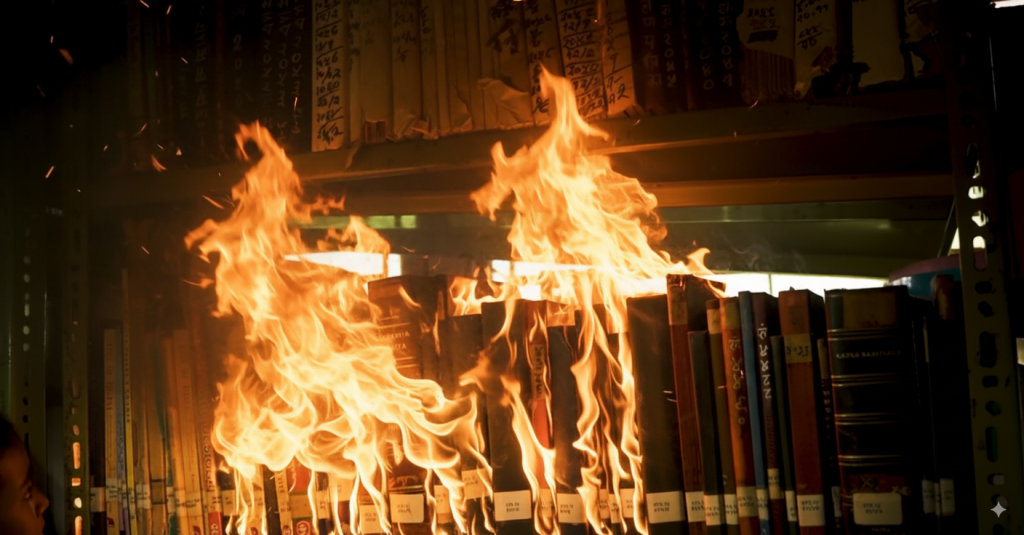
A devastating arson attack at the Supreme Court of Nepal has destroyed thousands of case files, leaving justice-seekers in uncertainty. Victims who traveled long distances to attend hearings were shocked to learn that their case files had been reduced to ashes.
Yasuddin Dewan, a resident of Bahuari, Parwanipur-5, Bara, arrived at the Supreme Court on Sunday only to find his case files gone. “I came by night bus, but when I reached here, I was told all the documents were burned. Now, there will be no hearing,” he told Annapurna Post. Dewan has been fighting a civil case for 12 years, winning at the High Court but later dragged to the Supreme Court by the opposition.
Files, Furniture, and Courtrooms Reduced to Ashes
Reporters entering the court complex witnessed staff drenched in sweat, sorting through charred remains of documents in dark, smoke-filled rooms. Sensitive files and case records had been destroyed, while police restricted outsiders from entering the burnt sections.
According to Nirajan Pandey, Assistant Spokesperson and Information Officer of the Supreme Court, as of Bhadra 22, there were 24,234 cases registered. Among them, 1,202 were over five years old, 8,762 were pending for over two years, and 14,270 were less than two years old.
The fire on Bhadra 24 (September 9, 2025), fueled by vandalism during the Gen-Z movement, burned courtrooms, records, and even 43 court vehicles. Many crucial case files were deliberately targeted, with employees confirming that “major files were searched and set on fire.”
Justice Delayed, Justice Denied?
A task force led by Justice Til Prasad Shrestha and Mahesh Sharma Poudel has been formed to assess the damage. A draft guideline titled Directive on Recovery and Authentication of Destroyed Court Documents – 2082 is under discussion.
The incident has raised grave questions:
- How will missing case files be retrieved?
- What justice will remain for victims who waited years for hearings?
Widespread Damage Across Courts
According to official data, the arson and vandalism not only affected the Supreme Court but also 23 courts nationwide. This includes the Special Court, seven High Courts, and 14 District Courts.
The Supreme Court previously operated 11 benches — full, constitutional, joint, single, and extended — all of which suffered destruction. Even judges’ nameplates, witness stands, and furniture were burned. The damage is still being assessed, with no official record of the total loss.
Court Resumes Under Makeshift Tents
Despite the destruction, the judiciary has attempted to keep justice alive. From Bhadra 29 (September 14, 2025), the Supreme Court resumed essential services under makeshift tents. On Sunday, a single bench led by Justice Sunil Pokharel heard three habeas corpus petitions.
For now, tents serve as temporary courtrooms — a symbolic effort to ensure that the flame of justice does not extinguish, even as the temple of justice itself lies in ashes.










